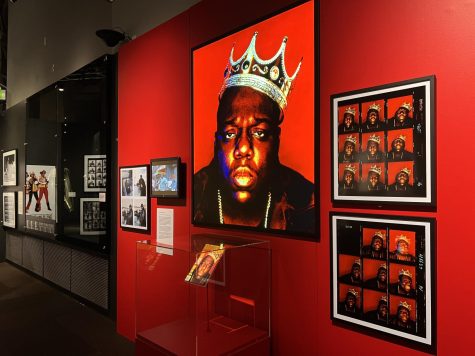The History of HipHop at the MoPop
Seattle’s Museum of Pop Culture (MoPop) is currently showcasing “Contact High,” an exhibit detailing the comprehensive history of modern hip hop music and its culture using photos and contact sheets.
“Contact High is an amazing exhibit that starts at the very beginning of hip hop culture,” Amalia Kozloff, a museum curator at MoPop, said. “It’s photographs of the people who were making things happen.”
One major theme throughout the exhibit is the relationship between the photographers and the subjects of the images; they were friends. They showcase a close and intimate perspective of who was present at the infancy of hip hop, where they were and what they were doing.
“Hip-Hop is the most popular musical genre in the world,” Kozloff said. “It has influenced how we socialize, what we listen to, how we consume culture and what we wear. All of those things have been impacted by hip-hop culture.”
The exhibit includes inside looks into the people behind hip-hop through images that haven’t been as common in the press or public eye. Sections include entire contact sheets of images that show outtakes, not just the final published image. One part of the exhibit displayed the famous album cover for Outkast’s album “Stankonia” released in 2000. Right under the album is the contact sheet showing all the outtakes from that photoshoot. The sheet conveys more personality and invites the viewer into who the artist duo were.
“Hip hop has impacted me in many different ways,” Bobbie Ennis, an actor and director in Los Angeles, said. “It’s really important to have exhibits like this one because it gives us an opportunity to recognize that we are in a society where we are constantly an audience to something, and that choice of what to consume has a lot of power.”

The exhibit explores the last four decades of hip hop and includes artists like Notorious B.I.G, Tupac, Wu-Tang Clan and countless others. It also has other items aside from photos like one of Biggie’s suits or MF DOOM’s mask. The exhibit is designed to allow visitors to explore, experience and connect to their stories.
“There is so much perspective in hip-hop that can’t be gained through other means,” Ennis said. “My initial introduction to it [hip hop] was prejudiced. The assumption that it is vulgar for the sake of being vulgar. But it’s not, it tells those artists stories and experiences.”
In the realm of hip hop there are four original elements: Dj-ing, Breaking, Graffiti and Emceeing (Rapping). The term hip hop was not popularized until the ‘80s as a more marketable name for the original four aspects. This changed how people viewed, consumed and the overall trajectory of the movement.
“Hip-hop is American culture. Which is technically ‘pop culture’ so it’s near impossible to stray from its influence,” Lars Sverre or “Soulrane,” a DJ and B-Boy, said. “Museums have showcased a ton of relics from hip hop. There have been original shell toe Adidas and Lee denim suits that Run DMC wore during their rise to fame. These examples are extremely important in proving that hip hop has left its mark in verbal and physical history.”
“Hip hop was born out of old fashioned U.S. oppression, period,” Soulrane said. He stated that it is important to acknowledge the whole history of the movement or progress will not be made.
Hip hop is new compared to other cultures but like many things, has roots dating prior to the name hip hop.
“There isn’t one generation of hip hop that is better or worse than the other,” Soulrane said. “It’s simply different eras and times that produce unique results. Hip-Hop is only 50 years old. Infantile in comparison to other cultures. Imagine what it will be in 100 years!”
To experience the exhibit for yourself, “Contact High” will be on display at the MoPop through January 2023.


